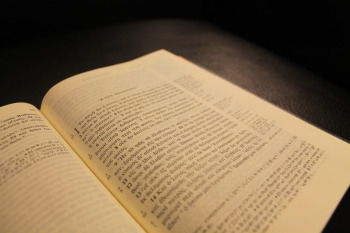"The First of His Signs" -- John 2:1-12
 Tuesday, November 25, 2014 at 10:10AM
Tuesday, November 25, 2014 at 10:10AM  The Eighth in a Series of Sermons on the Gospel of John
The Eighth in a Series of Sermons on the Gospel of John
Jesus’ first disciples heeded his invitation “to come and see.” They soon confessed that Jesus was Israel’s Messiah, the one promised throughout the Old Testament, and the Son of God. Jesus had promised them that they would see angels ascend and descend upon him–just as Jacob (Israel’s great patriarch) had seen in his vision. During their first two days with their new master, Jesus promised the disciples that “you will see greater things than these.” The time has come for them to witness Jesus’ first miracle, when our Lord turned water into wine at a wedding in Cana, an event which points to the great messianic wedding feast yet to come.
After spending seven Lord’s Days in the first chapter of John, today we make our way into the second chapter of John’s Gospel and the account of Jesus’ first miraculous sign which he performed at a wedding in the village of Cana. Just as his calling indicated, John the Baptist now fades into the background. Although we will read of the Baptist later on in chapter 3, that greater one than John, and who was before John, has now come. John must decrease and Jesus must increase. As we saw last time, this shift in redemptive history can be seen when the Baptist directs two of his own disciples (Andrew and likely, John, the disciple and author of this Gospel) to leave him and instead follow Jesus, marking the beginning of the Messiah’s public ministry.
In chapter two of his Gospel, John’s account of Jesus public messianic mission is under way. In fact, John (the disciple) will focus upon the messianic ministry of Jesus in the next eleven chapters (2:1-12:50). John will demonstrate how Jesus’ preaching and miracles reveal the glory of God, which has been veiled in his incarnation as indicated in verse 14 of the prologue. “And the Word became flesh and dwelt among us, and we have seen his glory, glory as of the only Son from the Father, full of grace and truth.” Jesus will reveal the glory of God through his words and deeds–but supremely at the cross.
In this section of John, the scene shifts from the wilderness east of the Jordan River (out in the sticks, where John the Baptist had been preaching) to the more populated area on the northwest side of the Sea of Galilee, in the area around Nazareth. Jesus has a group of disciples numbering at least five now traveling with him. When John the Baptist directed two of his own disciples to follow Jesus, Jesus then asks these inquirers to “come and see.” They do so, and one of them, Andrew, went and told his brother (Simon Peter), that he had found the Messiah. Andrew invites Simon to come and meet Jesus (he does) and Jesus renames him Peter, which means “rock” in Aramaic. When Andrew encourages Peter to “come and see,” we see the theme of John 1:35-51 now emerge: “witness bearing.”
Andrew also went and found Philip, urged him to “follow me,” to “come and see” for himself about Jesus. Philip went to Jesus, Philip believed, and in turn, he went and found Nathanael (likely the personal name of Batholomew), telling him in verse 45, “we have found him of whom Moses in the Law and also the prophets wrote, Jesus of Nazareth, the son of Joseph.” Despite Nathanael’s scepticism about the possibility of anything good coming out of Nazareth, he accepts Philip’s invitation to meet Jesus. When Nathanael approaches Jesus, Jesus not only identifies Nathanael as an honest man and a true seeker, but Jesus also reveals his supernatural knowledge, informing Nathanael that Jesus saw him sitting under a fig-tree without ever laying an eye upon him. Nathanael responds with his own confession of faith in Jesus: “Rabbi, you are the Son of God! You are the King of Israel!”
To read the rest of this sermon, Click Here


Reader Comments